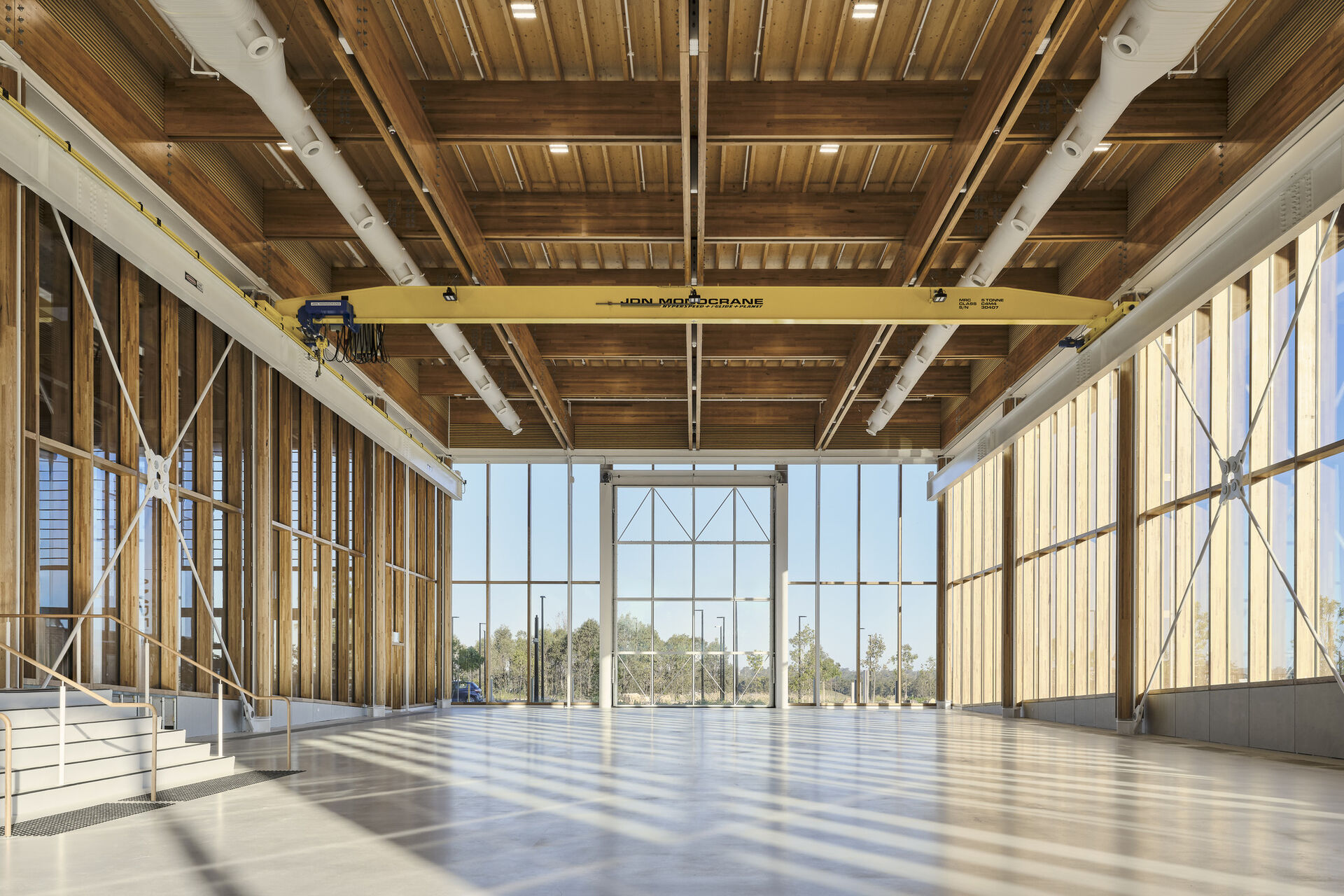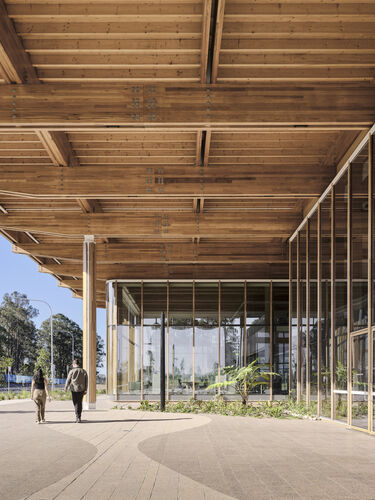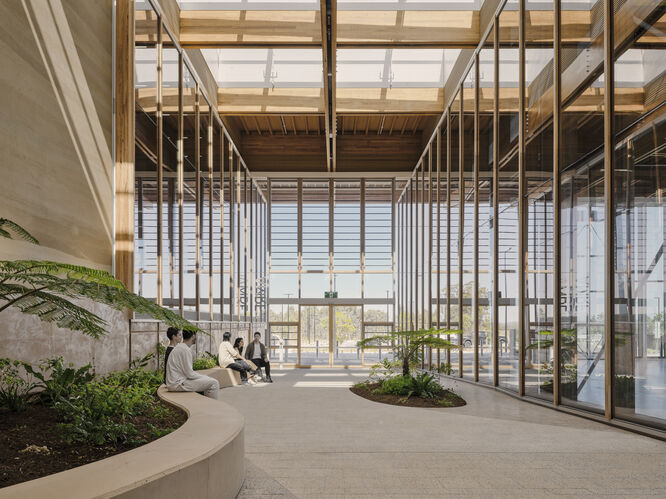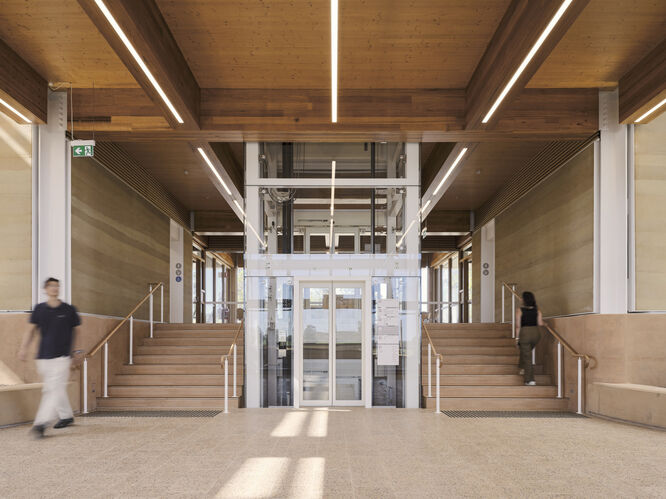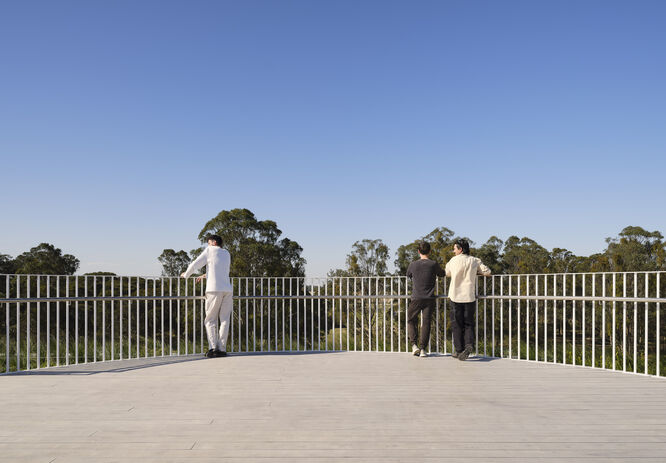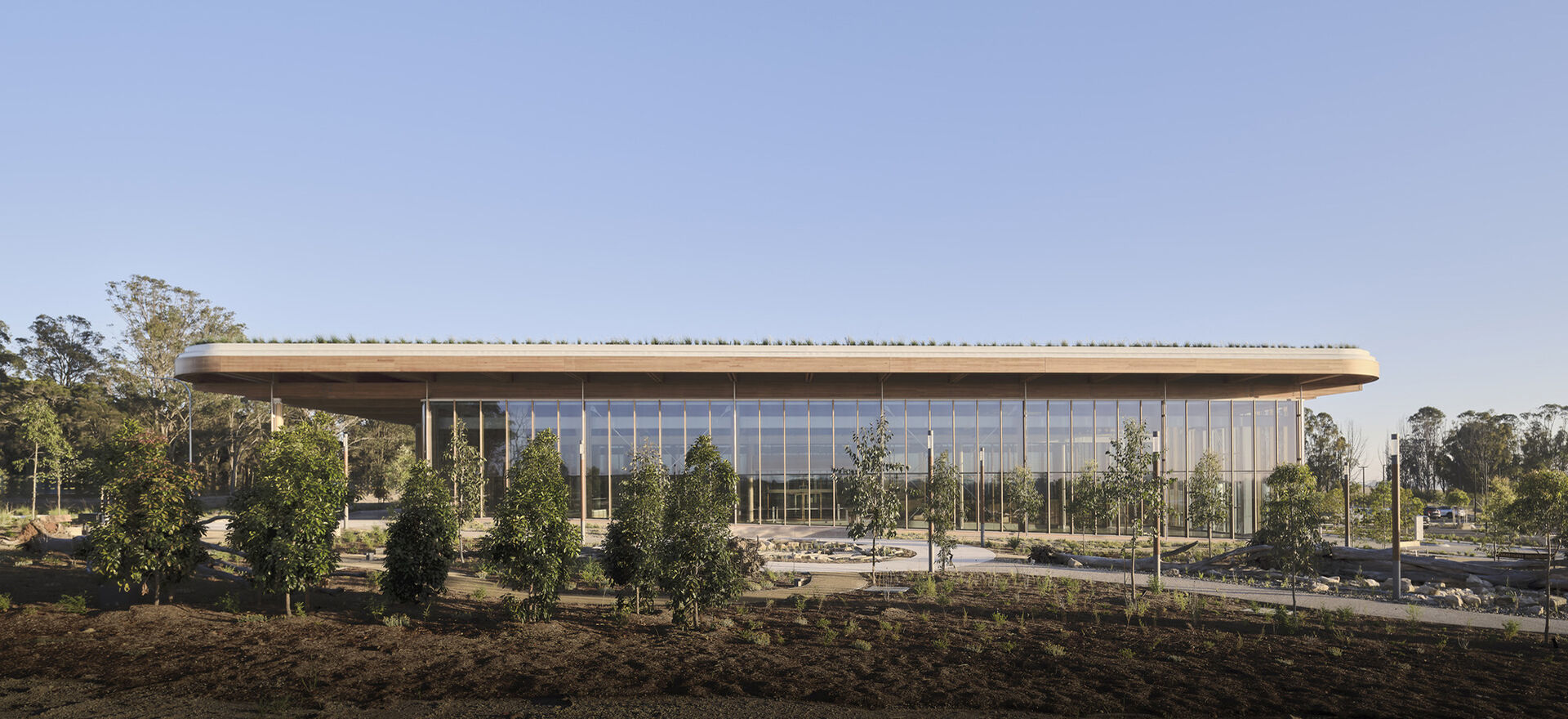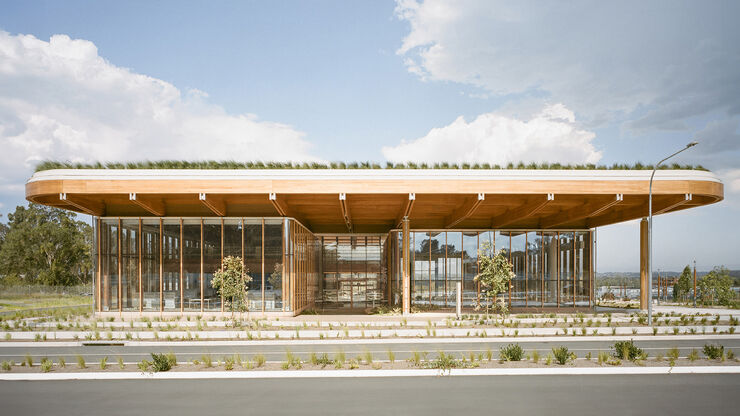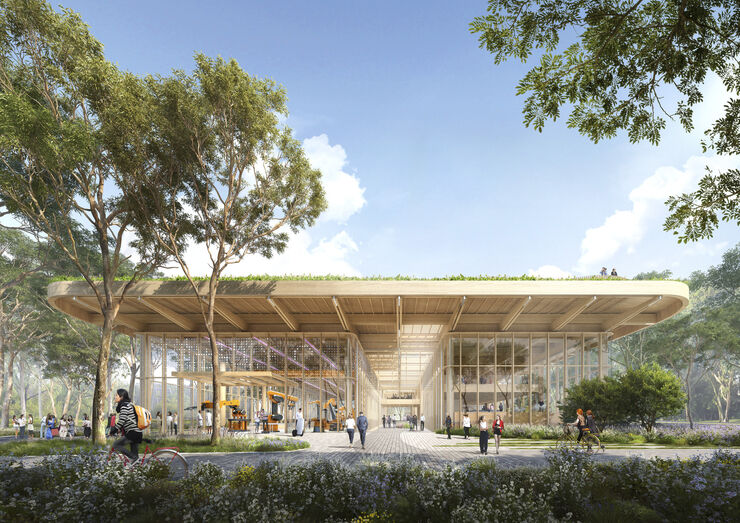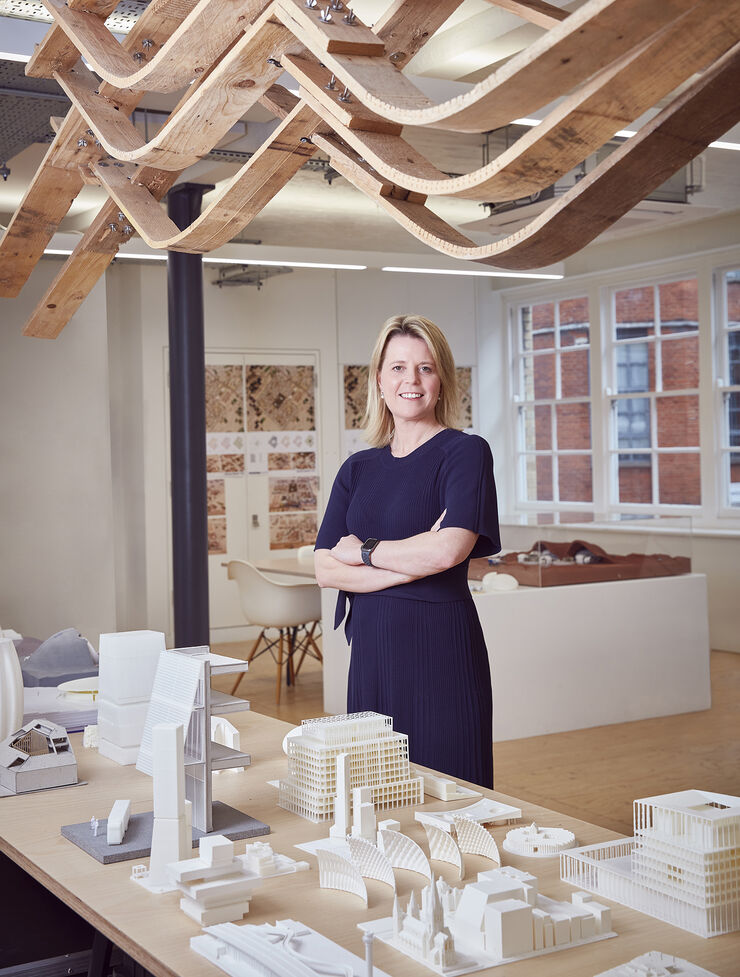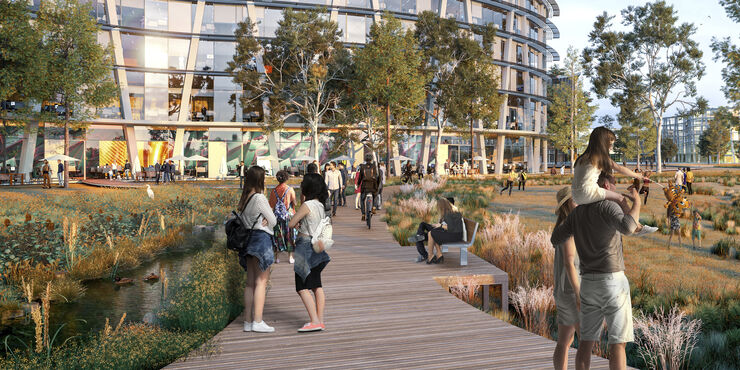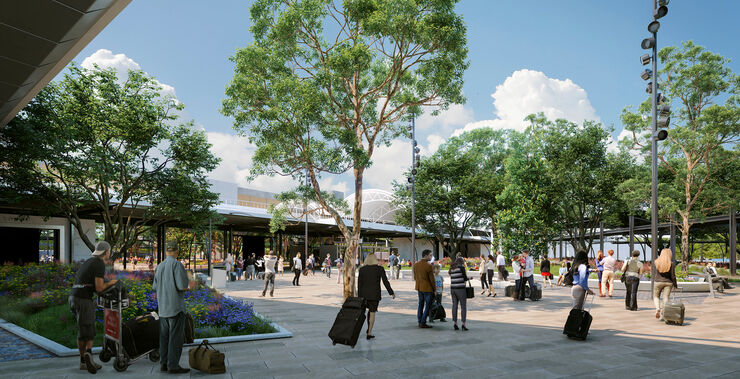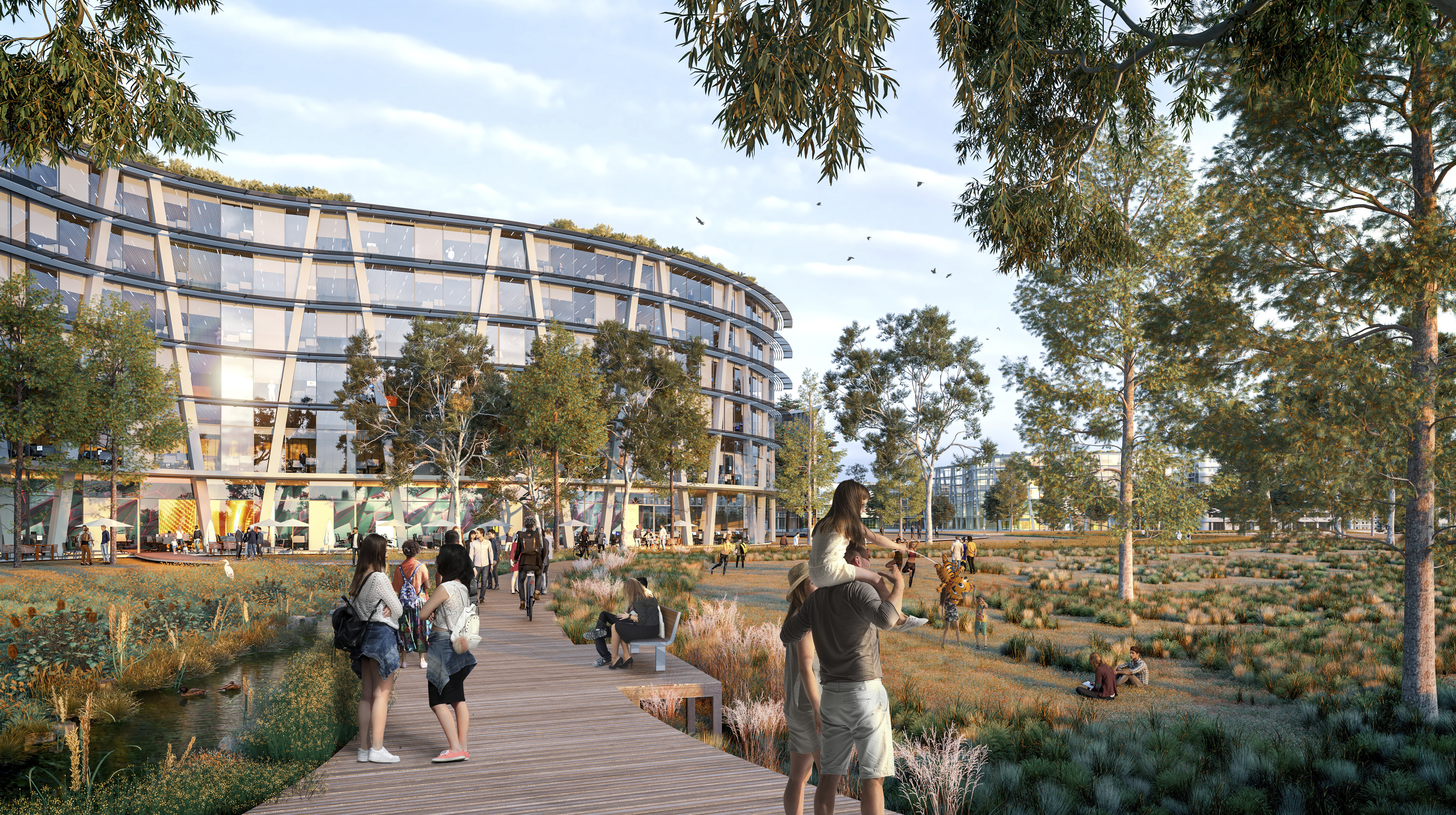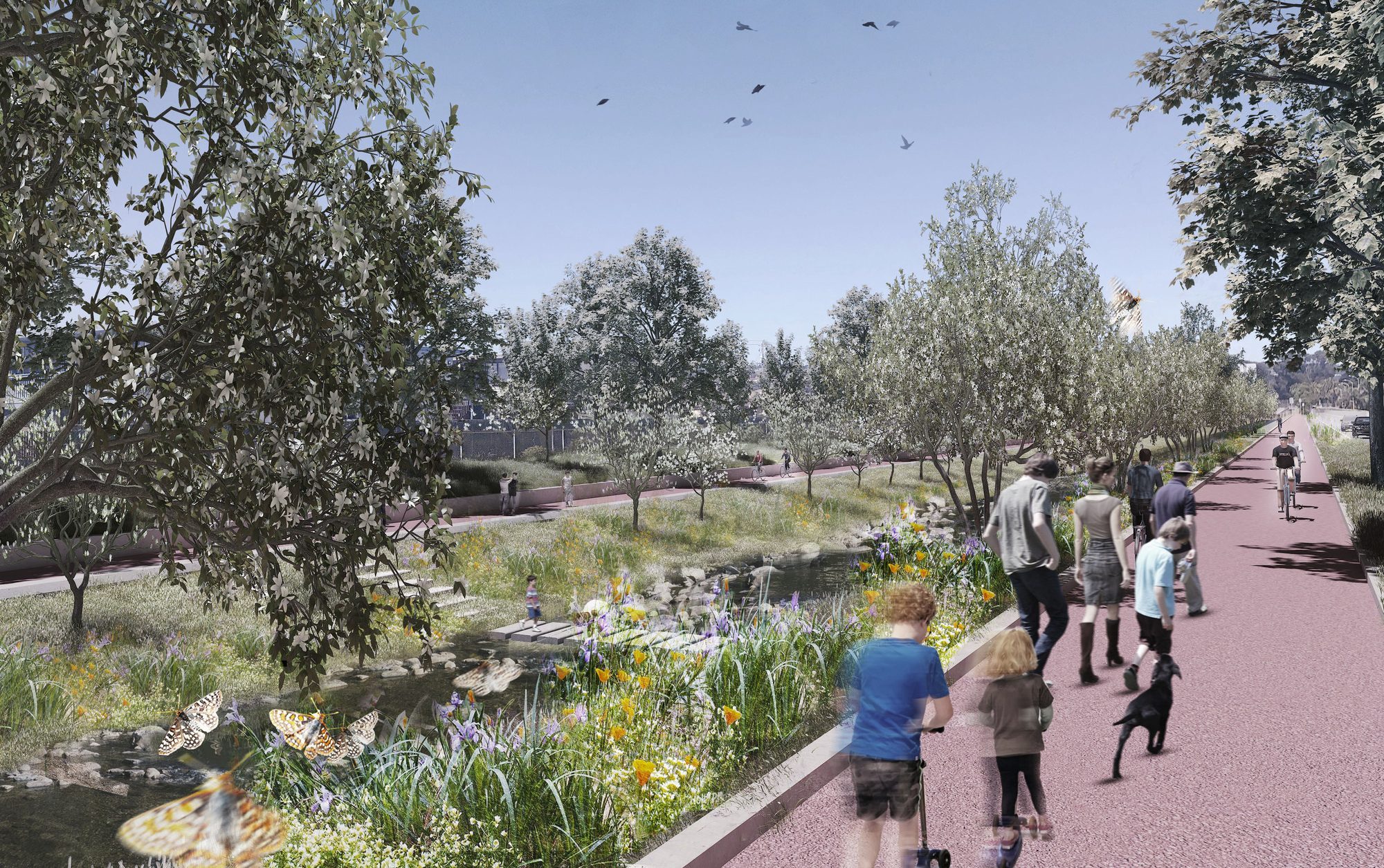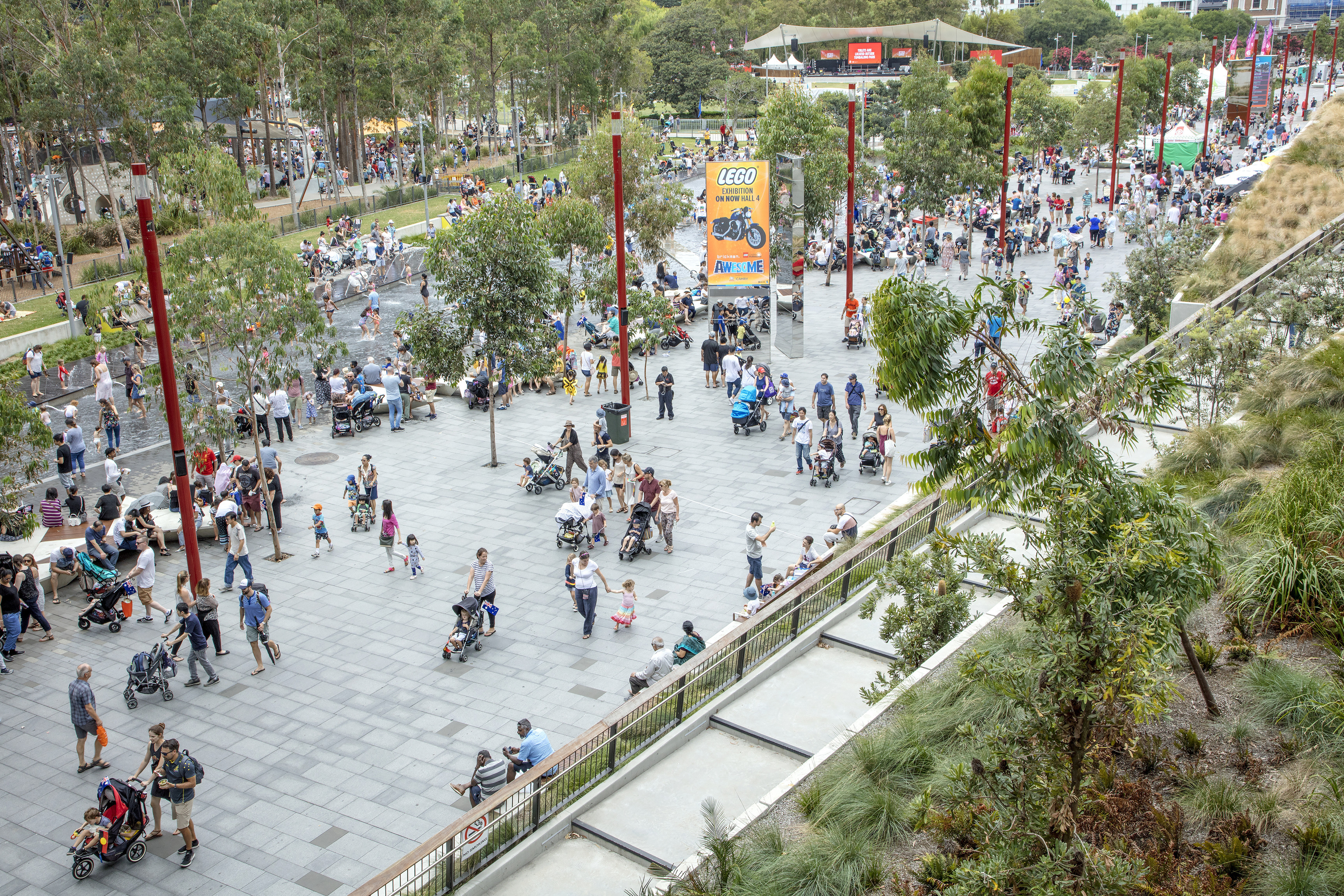The First Building places sustainability at its heart — and restores Indigenous Australian culture as the lifeblood of the land.
Facing the future while honouring the past, the First Building — housing Stage 1 of the Advanced Manufacturing Readiness Facility (AMRF) — is a collaborative space for government, industry and research to incubate innovative manufacturing projects. As the name implies, it’s also the first building designed for the new city of Bradfield and the surrounding area of Aerotropolis, the new urban region set to transform Western Sydney.
This unique workplace features a visitor centre and public viewing spaces designed to showcase the real-time building progress of Australia’s newest sustainable, connected city. With the design informed by First Nations cultural research and design agency Djinjama, the First Building is a celebration of the meandering and ephemeral water of the Cumberland Plain. It reinstates the site’s permeability, collecting and filtering the building and the site’s runoff across — through a richly planted landscape of Cumberland Plain plant species and water features.
AN URBAN PAVILION UNIQUE TO PLACE
Designed around the existing paddocks and tree stands but also as an urban pavilion in the future context of the city, the First Building is a human-scale structure that acts as a public space, providing relief from the density of the surrounding urban area. As the first building for the city of Bradfield, it sets a benchmark for the city to follow based on an ethos of being ‘connected, green and advanced’. It promotes design that is of its place and connected to Country.
In the local Dharug language, the area hosting Aerotropolis is known as Wianamatta, which means ‘Mother Place’. It’s a site of significance for First Nations women, reflected in the building’s open and welcoming architectural expression, a design language centred on ideas of water and fluidity, and the use of warm, soft, natural materials that touch the ground lightly.
STRENGTHENING ECOLOGICAL IDENTITY AND FUNCTION
The First Building demonstrates how contemporary urban landscapes can successfully represent, be informed by and champion existing ecology and natural landscape. It celebrates the Cumberland Plain of Western Sydney by immersing people and their activities within a richly planted, permeable ground plane of locally underused species. This will play a critical role in re-establishing the site’s ecological identity and set an important precedent for the future development of the Aerotropolis region.
Water and water management are of great significance to this site and its wider context. The First Building adopts a holistic approach to water by capturing and storing rainwater for greywater use and landscape irrigation. Existing water bodies, including the longest freshwater stream in Greater Sydney, will be regenerated to promote biodiversity, slow down runoff, and allow for natural filtration into the ground, which benefits the creek’s health.
CIRCULAR ECONOMY AT THE CORE
According to Djinjama’s Danièle Hromek, designing the First Building represents “a massive opportunity across time and space”. Appropriately, it answers the burning question: what happens when the building outlives its use? Here, we’ve embedded the idea of circular economy.
The building has been conceived as a ‘kit of parts’, its timber structure comprising prefabricated modular components that are mechanically fixed together. These can be disassembled, expanded, or even relocated.

